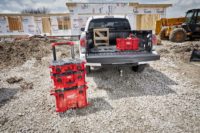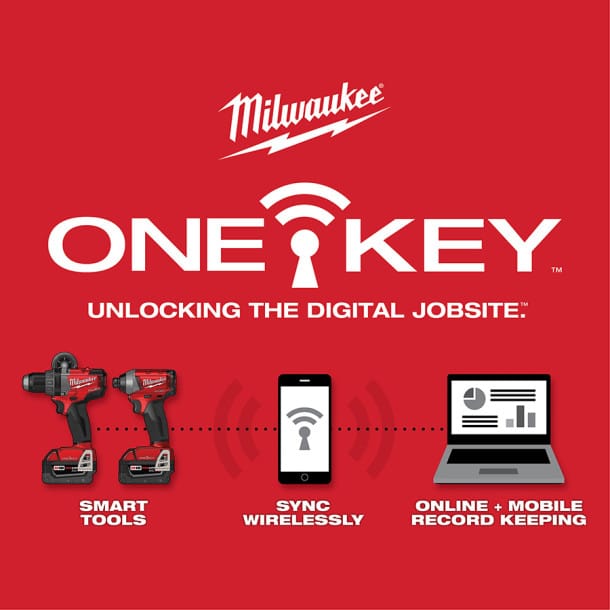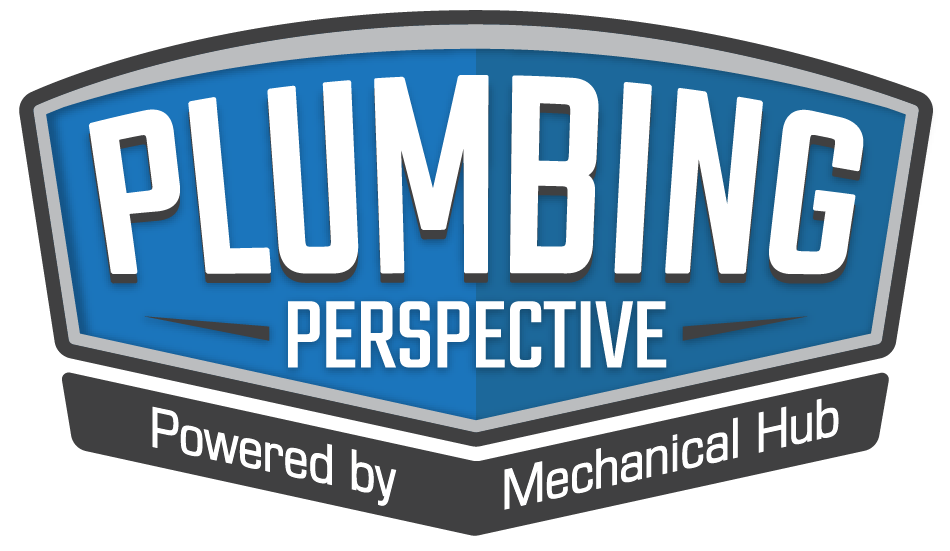Ask any plumber (or contractor for that matter) about their worst nightmare, and tool theft will likely come up in the discussion. It’s not just the monetary value of the tools themselves – some of which will be ensured and can always be replaced – but the immediate impact on ability to work and the Read more
Tracking

Ask any plumber (or contractor for that matter) about their worst nightmare, and tool theft will likely come up in the discussion. It’s not just the monetary value of the tools themselves – some of which will be ensured and can always be replaced – but the immediate impact on ability to work and the frustration that your general flow of managing jobs is ruined which makes this experience feel utterly awful for most.
A stolen van full of equipment can mean weeks of lost income, frustrated customers, and the exhausting process of replacing specialized tools that took years to accumulate. Some may even hold sentimental value to you, and no, that’s not a silly way to think about the tools you’ve used for years and have put a roof over your head and fed your children, sometimes even for decades.
To be anecdotal, the problem seems to be getting worse too. With tools becoming more expensive and sophisticated, it seems like they’re becoming more and more attractive targets for theft. Almost every plumber and other trades worker you will meet has a story about arriving at their van one morning to find it emptied overnight, and if not, they likely know someone else who does. Some have even experienced theft while on the job site itself.

Have A Robust Storage Plan
Throwing all your tools in the back of the van is necessary as you go from point A to B, but always assume someone can get in there no matter what alarms you have. Today’s storage requires more thought, and some plumbers use heavy-duty tool vaults bolted directly to their vehicle frame, while others have started using mobile storage solutions similar to the gantry cranes and secure containers you might see on construction sites, especially plumbing businesses that run a fleet and need to pack trucks.
That way you don’t just protect tools but also organize them in a way that makes theft more difficult without making daily access frustrating. Even something as simple as using different storage locations for various tools, rather than keeping everything in one easily accessible place, can help reduce losses if someone does break in. It’s annoying we have to do this, but it does mean you don’t have to worry overnight.
Technology & Tracking
Luckily, if the thieves are using more tools to get into yours, you get to enjoy the benefits of tech too. GPS trackers have become smaller and more affordable, making them practical for protecting larger tools and equipment – an airtag in a toolbox might save you thousands if you know where it is or where it’s been taken to (though we can’t recommend following thieves of course, always care for your personal safety first).
In addition, some newer power tools even come with built-in tracking capabilities or can be disabled remotely if stolen. Security cameras in work vehicles aren’t uncommon anymore either – they’re small enough to be hard to notice while providing valuable evidence if theft occurs. Perhaps the police can be more motivated when given that kind of info. Even simple motion-activated lights and alarms can make a nice difference, especially when tools need to be left in a vehicle overnight. At the very least you’ll scare the thief.
Site Security Practices
It’s weird to think of such brazen acts, but many thefts happen right on the job site, often when workers are distracted or during breaks. Or, you know, working hard and not stealing other’s belongings!
This is where discipline works best. Don’t leave tools scattered around the work area, as keeping them organized and within sight helps prevent opportunistic theft. When working on larger projects, some plumbers coordinate with other tradies they trust to create secure storage areas using existing site provisions. Having a system for tracking tools throughout the day helps notice if something goes missing sooner rather than later too, like doing spot checks three times a day. And, of course, only work with people you can trust.
Insurance & Documentation
While insurance might not prevent theft at all, having the right coverage can make recovery much easier and less of an emotional and financial shock. Standard vehicle insurance often doesn’t cover tools stolen from a van, so specific equipment coverage is mostly required.
Keeping detailed records of your tools, including serial numbers and photographs that are updated every few months, can help both with insurance claims and recovery if stolen items show up at pawn shops or online marketplaces too – sometimes the police can track an item that way. Some plumbers even mark their tools with unique identifiers that make them easier to recognize if recovered, like a signature in permanent ink or just initials.
With this advice, we hope you can more easily avoid tool theft, hopefully never experiencing it on a personal level.

Do you have a strategy for your social media? How does your customer base see you on social media? Are you reaching new customers? These are all great questions as a business owner you should ask yourself when doing social media. You should also be asking your social media partner these questions and how are Read more
Do you have a strategy for your social media? How does your customer base see you on social media? Are you reaching new customers? These are all great questions as a business owner you should ask yourself when doing social media. You should also be asking your social media partner these questions and how are they going to help achieve your goals.
There is a lot more that goes into social media than just putting out an organic post or wanting to run ads on Facebook or Instagram. Just like any other form of media you need to have a strategy and need to have a full funnel approach to make sure you are able to capture new and existing clients wherever they are at in their buying cycle.

We are going to talk about 5 tips when doing social media in the trades.
First Tip: Goals
What are your goals for social media? Is it lead generation, traffic to the site, brand awareness, engagement, etc.? Understanding each of these goals will determine how you go after your existing and new customer base. You should have separate budgets for each goal so that you know exactly how each campaign and goal is performing. You need to set up each campaign based on your goal and make sure that each creative matches what the goal is.
Second Tip: Creative
Creative is key for social media. Creative needs to match your brand, audience, and platform that you are going after and engaging. When looking at social platforms, understanding who the end user is going to be on the other end is crucial. You need to match your creative to the platform and the audience who is consuming that media. You also have to look at what your goal is for each campaign. If you want them to fill out a form for an estimate or get more information that creative needs to guide the end user to filling out a form either on your website or through their social platform. All creatives must have a strong call to action (CTA) for what YOU want them to do. Once you know how you want your new potential customer to interact with your company, tracking is going to be KEY!
Third Tip: Tracking
Tracking is crucial for you to not only see your ROI, but also understand how your customer base and new potential customers are interacting with your brand. Tracking in Facebook ads, Facebook events manager and Google Analytics is key.
What is a conversion for your business? Phone call, form fill, chat, or scheduling an appointment? Once you know what a conversion is, work with your social media partner to make sure that you are measuring the same data points. What is the goal of each campaign as a lead generation campaign is going to be measured differently than a website traffic campaign? Make sure that you are setting up conversions and understanding the data and how many touch points your customers and potential customers need prior to converting is important to your strategy. This is why doing the full funnel approach is critical to any successful campaign. We already know that your average consumer needs four to seven touch points prior to converting.
Fourth Tip: Platforms
What social media platforms should you advertise and post on? This also plays into goals, as we want to match the correct platform for your goals. Not all social platforms will match your goals. There are so many social media platforms that you can go after. You will look at each platform and evaluate each one to see what makes the most sense for your business and your end user. The creative will also need to be a little different for each platform for the end user. When looking at goals your social media partner should make the recommendation of which platform makes sense and what the creative should look like.
Fifth Tip: Results
Reviewing your results each month is important. Measuring the metrics monthly will allow you and your social media partner to determine if a campaign needs to be adjusted. This could be the creative, the audiences, location, or starting to use A/B creative in the campaigns. Testing will help determine if you need to make adjustments, but starting everything all over again. This will also give you insights into what works during the year and going back to best practices and creative each year. It is extremely important for you to create the ads manager yourself so that you can also keep historical data. Social media can help with additional touch points within the customer journey. How you work your social media strategy will help with your business goals, engagement with your existing customers and new customers, plus bringing brand awareness.
Social media is a platform that all trades should be part of. We all do some much for the communities and helping others in need of help and your customer base and new customers want to see that you are part of their community. When you are part of a community you want to support local business. This is what social is all about and these are some of the items that you want to incorporate into your strategy, but also post on a regular basis to show the community that you are there for them.
Organic social posting should also be discussed during your social media evaluation. Too many businesses are forgetting about organic posting. You should be posting two to four times a week, and it should be a mix of culture, reviews, education, and promotions. Getting more of your organic followers to be engaged with your organic posts will help others see them. Boosting organic posts will also help your brand to be seen. Just remember boosting is a different strategy than a paid strategy. Hopefully this article has sparked your interest to review your social strategy. Really look to see if you are getting the most out of it!
 Chris Yano is CEO of RYNO Strategic Solutions.
Chris Yano is CEO of RYNO Strategic Solutions.
